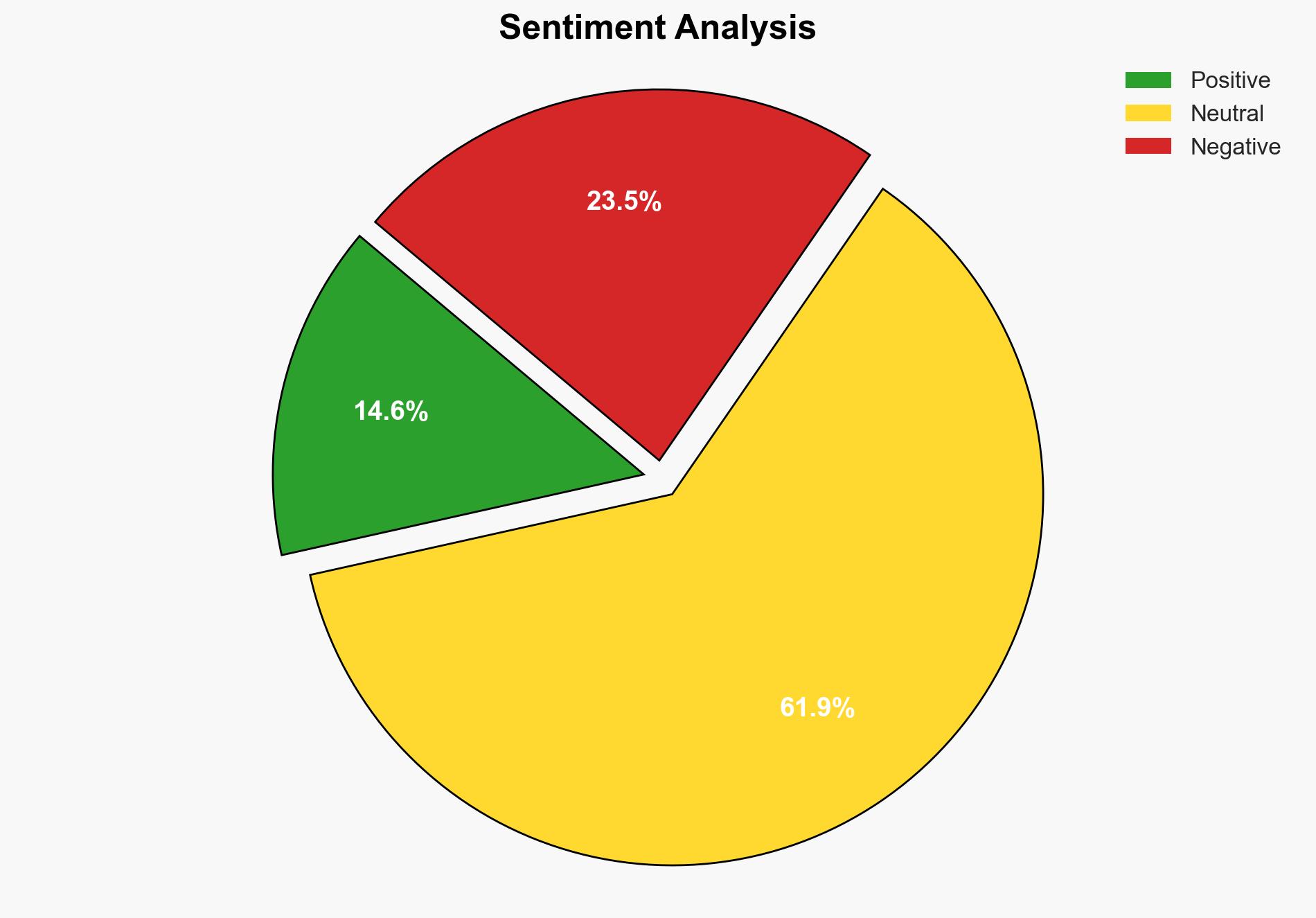Deadly impacts of childhood stunting can be prevented WFP insists – UN News
Published on: 2025-03-26
Intelligence Report: Deadly impacts of childhood stunting can be prevented WFP insists – UN News
1. BLUF (Bottom Line Up Front)
The World Food Programme (WFP) highlights the urgent need for increased investment to combat childhood malnutrition, particularly in conflict and crisis-affected regions. Chronic funding shortages threaten essential feeding programs, risking the health and development of millions of children globally. Immediate action and targeted support for vulnerable populations, including pregnant women, are critical to preventing long-term developmental impairments and economic losses.
2. Detailed Analysis
The following structured analytic techniques have been applied for this analysis:
General Analysis
The WFP identifies childhood wasting and stunting as preventable issues exacerbated by conflict, economic instability, and climate crises. The agency’s efforts have successfully prevented malnutrition in millions of mothers and children through fortified foods and nutritional supplements. However, funding deficits threaten these initiatives, particularly in regions like Yemen, Sudan, and the Sahel. The lack of resources could lead to increased mortality rates, impaired physical and cognitive development, and weakened immune systems in affected children.
3. Implications and Strategic Risks
The strategic risks include heightened regional instability due to increased child mortality and malnutrition rates. Economic impacts are significant, with low and middle-income countries potentially losing substantial GDP due to increased healthcare costs and reduced human capital. The humanitarian crisis could exacerbate security issues, particularly in regions already experiencing conflict and displacement, such as Sudan and the Sahel.
4. Recommendations and Outlook
Recommendations:
- Increase international funding and support for WFP’s malnutrition prevention programs to ensure continuity and expansion.
- Implement targeted nutritional support for pregnant women to prevent malnutrition from the earliest stages.
- Enhance coordination among international agencies to ensure efficient resource allocation and delivery of aid.
Outlook:
Best-case scenario: Increased funding and international cooperation lead to a significant reduction in childhood malnutrition rates, improving health outcomes and economic stability in affected regions.
Worst-case scenario: Continued funding shortages result in widespread malnutrition, increased child mortality, and long-term developmental impairments, exacerbating regional instability and economic decline.
Most likely outcome: Partial funding improvements allow for some program continuation, but significant gaps remain, leaving many children at risk of malnutrition and its associated impacts.
5. Key Individuals and Entities
The report mentions significant individuals and organizations but does not provide any roles or affiliations. Notably, Cindy McCain is highlighted for her statements on the necessity of addressing malnutrition. The World Food Programme is the primary organization driving these initiatives.





